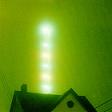|
Hey guys I just got finished with the box thing I was building. I put on like 4 coats of spray lacquer, then sanded it, and then put on 1 final coat of lacquer. The box turned out decently well, but I used up basically the entire 10 dollar (euro) can in the process. Is that normal or did I use way too much lacquer? 10 dollars isn't that much, but I plan on building a lot more stuff so I was thinking if it would be more cost efficient and viable to apply the first coats of lacquer with a brush, and then finish it up with the spray lacquer after sanding. Is that a viable idea, or is it going to be too much of a hassle to make the 2 different lacquers work well with each other? How do you guys finish your small woodworking projects?
|
|
|
|

|
| # ? Jun 12, 2024 23:16 |
|
Anyone with renovation experience where there was pre existing lead paint? We hired a contractor to do the renovation work on our kitchen as I just don't have the time but we're doing the demo ourselves. It's a significant project and we'll be taking out walls. I used some 3M tests and it looks like we have lead paint under a couple layers of newer stuff (house was built in '57). I've read about how to handle the demo (n100 respirators, plastic over exits, hepa filter in the shop vac, wetting down surfaces before demo, plastic on the floor etc.). Does it sound like I have a good handle on this or should I leave it to the pros? Seems like they wouldn't be doing much different than I would but I wonder how worried I should be, especially with a toddler around.
|
|
|
|
stupid puma posted:Anyone with renovation experience where there was pre existing lead paint? We hired a contractor to do the renovation work on our kitchen as I just don't have the time but we're doing the demo ourselves. It's a significant project and we'll be taking out walls. I used some 3M tests and it looks like we have lead paint under a couple layers of newer stuff (house was built in '57). I've read about how to handle the demo (n100 respirators, plastic over exits, hepa filter in the shop vac, wetting down surfaces before demo, plastic on the floor etc.). Does it sound like I have a good handle on this or should I leave it to the pros? Seems like they wouldn't be doing much different than I would but I wonder how worried I should be, especially with a toddler around. It's no big deal, if you gently caress it up and your whole house and ventilation system is covered in lead dust your child will have permanent mental problems. (I wouldn't gently caress around with it personally. The penalty for error is very large. Lead and asbestos are best left to the pros. HEPA Bag+Filter in the shop vac btw.) H110Hawk fucked around with this message at 04:25 on Nov 29, 2016 |
|
|
|
I think our washing machine bit the dust today. It's an old top loading GE washer. It fills, it agitates and spins, but it does not drain. I get a humming noise instead. I assume it was a clogged drain or pump, but I just finished dis-assembling them and didn't find any obstructions. Open to any ideas
|
|
|
|
couldcareless posted:I think our washing machine bit the dust today. It's an old top loading GE washer. It fills, it agitates and spins, but it does not drain. I get a humming noise instead. I assume it was a clogged drain or pump, but I just finished dis-assembling them and didn't find any obstructions. Open to any ideas If I were you, I'd be tempted to throw a new pump in it. What is the exact model? If you can figure out what kind of voltage the pump should be getting, you could remove it and test it in vitro.
|
|
|
|
Safety Dance posted:If I were you, I'd be tempted to throw a new pump in it. What is the exact model? If you can figure out what kind of voltage the pump should be getting, you could remove it and test it in vitro. Pumps on washing machines are entirely mechanical. The motor spins one way and the agitator spins, the motor spins the other way and both the drum and pump spin. Seconding replace the pump. For the record, is the drain hose clogged?
|
|
|
|
stupid puma posted:Anyone with renovation experience where there was pre existing lead paint? We hired a contractor to do the renovation work on our kitchen as I just don't have the time but we're doing the demo ourselves. It's a significant project and we'll be taking out walls. I used some 3M tests and it looks like we have lead paint under a couple layers of newer stuff (house was built in '57). I've read about how to handle the demo (n100 respirators, plastic over exits, hepa filter in the shop vac, wetting down surfaces before demo, plastic on the floor etc.). Does it sound like I have a good handle on this or should I leave it to the pros? Seems like they wouldn't be doing much different than I would but I wonder how worried I should be, especially with a toddler around. Eh, I wouldn't worry about it too much. Just wear a respirator, and don't eat the paint chips. If you're really worried cover over your air intake vents. You're not sanding and grinding the paint off, so it shouldn't be airborne. Lead is mostly a hazard to developing children, ingesting it can cause malformations of the amygdala. I'd be more worried about lead in your water, than anything stable and entombed from demolition, and even then lead solder and pipes should have a protective coating unless you're in a place like Flint or Sebring and the municipal water supply hosed up the ph balance. I'd honestly be more worried about stuff like fiberglass insulation.
|
|
|
|
OSU_Matthew posted:Eh, I wouldn't worry about it too much. Just wear a respirator, and don't eat the paint chips. If you're really worried cover over your air intake vents. You're not sanding and grinding the paint off, so it shouldn't be airborne. Yeah I don't think I'd be concerned except I do have a developing child. It's hard to know what a "pro" would do vs what I would do after having read a couple government guidelines for handling the stuff. Some online resources say just to be careful and it's not a huge deal while others make it sound like your house is a superfund cleanup site.
|
|
|
|
stupid puma posted:Anyone with renovation experience where there was pre existing lead paint? We hired a contractor to do the renovation work on our kitchen as I just don't have the time but we're doing the demo ourselves. It's a significant project and we'll be taking out walls. I used some 3M tests and it looks like we have lead paint under a couple layers of newer stuff (house was built in '57). I've read about how to handle the demo (n100 respirators, plastic over exits, hepa filter in the shop vac, wetting down surfaces before demo, plastic on the floor etc.). Does it sound like I have a good handle on this or should I leave it to the pros? Seems like they wouldn't be doing much different than I would but I wonder how worried I should be, especially with a toddler around. The reason the EPA only demands plastic on the floor 6 feet out from the work (unless that's changed recently - I took my lead training about 5 years ago, and I've changed careers since) is that lead doesn't go airborne particularly easily, so it's a lot less scary to work with than asbestos.
|
|
|
|
I've got a light fixture in the bathroom that is rated for 60 watt bulbs, but (1) doesn't fit a 60 watt bulb well and (2) doesn't give off nearly enough light with a 60 watt bulb. The LED bulbs I've come across are just fractionally larger and so won't fit in the enclosure. Is there anything such as a slim or narrow LED bulb? I've found some of the flat ones by phillips, but the diameter of the long edge seems to be the same as a regular bulb. The appearance of the bulb doesn't really matter as long as it would be slightly narrower than a regular incandescent. Thanks!
|
|
|
|
snickles posted:I've got a light fixture in the bathroom that is rated for 60 watt bulbs, but (1) doesn't fit a 60 watt bulb well and (2) doesn't give off nearly enough light with a 60 watt bulb. The LED bulbs I've come across are just fractionally larger and so won't fit in the enclosure. Is there anything such as a slim or narrow LED bulb? I've found some of the flat ones by phillips, but the diameter of the long edge seems to be the same as a regular bulb. The appearance of the bulb doesn't really matter as long as it would be slightly narrower than a regular incandescent. Thanks! Try Sylvania micro mini CFLs. They won't be as efficient as LEDs, but they sure are tiny. Lowes sells them.
|
|
|
|
kid sinister posted:Try Sylvania micro mini CFLs. They won't be as efficient as LEDs, but they sure are tiny. Lowes sells them. Exactly what I needed. Thanks!
|
|
|
|
So I'm about to pull the trigger and by my first house. It's pretty much move in ready, which is good since I don't have the  to work on it at the moment. The only think I want to do is install a light fixture in the living room since it's an older house and there's no light in there. I'm really comfortable doing the work myself, but can someone recommend a big book that is just full of how to fix things in the home? Like I figure I can jump off an outlet for power but I'm not sure how, and all that stuff. I'd like to get a tome that I can just leaf through and learn about home stuff. to work on it at the moment. The only think I want to do is install a light fixture in the living room since it's an older house and there's no light in there. I'm really comfortable doing the work myself, but can someone recommend a big book that is just full of how to fix things in the home? Like I figure I can jump off an outlet for power but I'm not sure how, and all that stuff. I'd like to get a tome that I can just leaf through and learn about home stuff.Then the next thing is to figure out codes, I suppose there's a book I can get for that too right? I like in NJ, but I guess I need to look at the city codes and stuff right?
|
|
|
|
Oh God don't do it
|
|
|
|
Wait. You think you're going to buy a house and you're talking about replacing a lighting fixture first thing? Maybe pump the brakes.
|
|
|
|
Jerk McJerkface posted:So I'm about to pull the trigger and by my first house. It's pretty much move in ready, which is good since I don't have the Home Depot, Lowes, etc. all sell books that contain a bunch of "how to fix stuff around the house" projects. The Black & Decker Complete Guide to Wiring is also a good book that specifically focuses on electricity. Alternately, have you considered buying a floor lamp?
|
|
|
|
Get a $25 torchiere that has a ~75 watt main lamp for diffuse area light and a ~40 watt gooseneck reading lamp for focused light, e.g.: http://www.homedepot.com/p/Hampton-Bay-71-5-in-Silver-Floor-Lamp-1792814/100587931 If you're going to be going through the living room when it's too dark to find the lamp, get a cheap remote outlet switch and stick the remote to a convenient place on the wall.
|
|
|
|
HEY NONG MAN posted:Wait. You think you're going to buy a house and you're talking about replacing a lighting fixture first thing? Maybe pump the brakes. I'm not sure why "hey it'd be nice to have a ceiling light in the living room" is such an unreasonable complaint. A lot of the houses around here are older and don't have them. I've installed plenty of lighting fixtures before, just never had to actually wire, and I'd like to learn how to do my own work. Why is this is a problem? The home inspection is in a couple days, so if there's any super huge issues of course I'll pump the breaks on the house, but why shouldn't I learn how to do some basic wiring and other stuff? I've worked in construction for years doing carpentry work, so I'm comfortable doing the work, but I'd like to just boost my knowledge of wiring, plumbing, etc.
|
|
|
|
Jerk McJerkface posted:I'm not sure why "hey it'd be nice to have a ceiling light in the living room" is such an unreasonable complaint. 
|
|
|
|

|
|
|
|
Lol do you guys suppose there's a book?
|
|
|
|
Jerk McJerkface posted:I'm not sure why "hey it'd be nice to have a ceiling light in the living room" is such an unreasonable complaint. A lot of the houses around here are older and don't have them. I've installed plenty of lighting fixtures before, just never had to actually wire, and I'd like to learn how to do my own work. Why is this is a problem? Nah, you're good... If you've got a basic knowledge of construction and tools, you'll be fine adding a light fixture. What you want is the black and decker guide to home wiring. It is the bible of all things 120v AC electrical, with lots of diagrams, pictures, and simple explanations so you can understand everything. Fishing wire is a bitch, but pick up some fish sticks from harbor freight, a fish tape, a good multimeter, a good pair of wire stripper pliers, the black and decker electrical book, and a wire sheathing stripper, electrical tape, a good 18v cordless drill, 12-3 gauge romex, fan rated joist bracket electrical box, and appropriate drill bits, and it's definitely doable. I'd highly recommend installing a fan in lieu of a light. If you have basement access to the room, it's easier top run the wiring straight up from there, terminate in a switch box on the wall, and then cut out the corner of the ceiling and run it into the ceiling joists. Get a 4" hole saw (this is where you especially want a good 18v drill) and cut out a hole in the center of the room. Install the bracket, wire it in, easy.
|
|
|
|
OSU_Matthew posted:Nah, you're good... If you've got a basic knowledge of construction and tools, you'll be fine adding a light fixture. Thanks for the advice. I've wired thousands of data runs all over NYC and NJ, so I'm pretty handy with a fish tape, and I have all those tools already, so I think I'm good to go. The plan was always for a fan as well. The room has basement access too. I suppose this involves like tapping off a run to an outlet in the same room, right? When I'm up in the ceiling, the plan would be approach it from where I can get between the joist all the way so I don't have to drill a bunch of holes through them.
|
|
|
|
Jerk McJerkface posted:Thanks for the advice. I've wired thousands of data runs all over NYC and NJ, so I'm pretty handy with a fish tape, and I have all those tools already, so I think I'm good to go. The plan was always for a fan as well. The room has basement access too. I suppose this involves like tapping off a run to an outlet in the same room, right? Oh, yeah, you definitely shouldn't have a problem then. Just make sure you at the very least read through the book and understand everything before you start, and you'll be fine. You can even get that book at the local library in a lot of cases, or a previous edition from Abe or Thriftbooks for super cheap. Most modern fans only draw in the neighborhood of half an amp or ~65 watts on high. Essentially the power of an old incandescent lightbulb. Assuming you have a modern electrical system with new distribution panel and 100-200 amp service, tapping off an outlet shouldn't hurt anything, assuming most outlets are on a 15-20 amp circuit. Definitely don't assume anything though, and figure out what all is on the circuit first and make sure it's not already overloaded with a ton of other stuff, etc etc etc. Worst case, adding a new circuit to a distribution panel isn't very difficult at all, you just need to understand exactly what's going on, where the hazards are, how to shut down power to the circuit/panel, etc. I'd start with smaller projects, like replacing kitchen/bathroom outlets with GFCI's, and work up from there before tackling larger stuff like that, though it sounds like you probably already have a lot of experience already. Also, be sure to check in with the electrical thread, there's several goons there that are actually electricians and can give you much better advice than I can. I believe Kid Sinister, Baby Eating Psychopath just off the top of my head, and Motronic used to be a fire marshall. Lots of great references there. This Popular Mechanics Complete Guide to Home Repair is also an excellent reference book to have on hand for everything in the house--highly recommend checking it out as well.
|
|
|
|
snickles posted:I've got a light fixture in the bathroom that is rated for 60 watt bulbs, but (1) doesn't fit a 60 watt bulb well and (2) doesn't give off nearly enough light with a 60 watt bulb. The LED bulbs I've come across are just fractionally larger and so won't fit in the enclosure. Is there anything such as a slim or narrow LED bulb? I've found some of the flat ones by phillips, but the diameter of the long edge seems to be the same as a regular bulb. The appearance of the bulb doesn't really matter as long as it would be slightly narrower than a regular incandescent. Thanks! http://www.homedepot.com/p/GE-60W-Equivalent-Soft-White-General-Purpose-LED-Bright-Stik-Light-Bulb-3-Pack-LED10S3-96/205783754
|
|
|
|
OSU_Matthew posted:Oh, yeah, you definitely shouldn't have a problem then. Just make sure you at the very least read through the book and understand everything before you start, and you'll be fine. You can even get that book at the local library in a lot of cases, or a previous edition from Abe or Thriftbooks for super cheap. Thanks for the tips. The house has new 200amp service. It's strange since it's a small cape cod that doesn't need more than 100amp, but it's there and the breaker/wiring in the whole house is only 5 years old. The upstairs is a loft, like a finished bonus room with two rooms (a small bedroom and aloft, but it has open attic storage in the eaves of the room between the walls and the roof itself. Looking around the house, the thinks I'd like to add, before I move in, that are with in my budget are: 1) Ceiling fan in the living room 2) Extractor over the kitchen stove. There's space for an over stove microwave, and I know they make them with vents, but do they make them with vents that go outside? Also how hard is it to install the vent, does it have to go to the roof or can I just punch a hole in the wall run it right out there. The outside is wood siding, so it's pretty easy for me to hack a whole on, but alternatively, going straight is just the attic space so I have room to play around up there. 3) Bathroom vent, same as number 2 4) Wall outlet for TV in the middle of living room wall. I'd like to run HDMI/Speaker/Outlet to a wall plate in the living room. I probably can't have them both in the same old works box right? I like to have an A/V rack in the basement and then just run HDMI up to the TV and audio to all the speaker jacks. I close early January so I have about four weeks to do all this before I have to move out of my apartment, so I'd like to tackle those four projects if possible. I have a good friend that's an electrician, so maybe I can get him a few beers and invite him out, but I'd prefer to not depend on him.
|
|
|
|
Jerk McJerkface posted:I'm really comfortable doing the work myself, but can someone recommend a big book that is just full of how to fix things in the home? https://www.amazon.com/dp/B003VS0N0U/ref=dp-kindle-redirect?_encoding=UTF8&btkr=1 https://www.abebooks.com/Readers-Digest-Complete-Manual/20489029591/bd?cm_mmc=gmc-_-new-_-PLA-_-v01&product=COM9780895770103NEW JVNO posted:Hey folks, 
|
|
|
|
Jerk McJerkface posted:Thanks for the tips. The house has new 200amp service. It's strange since it's a small cape cod that doesn't need more than 100amp, but it's there and the breaker/wiring in the whole house is only 5 years old. The upstairs is a loft, like a finished bonus room with two rooms (a small bedroom and aloft, but it has open attic storage in the eaves of the room between the walls and the roof itself. 200A is just a good standard size. It means you never have to think about it. 2 - Yes those exhaust outside. I don't know about roof vs. side of house but I'm pretty sure the latter is possible. Get the highest wattage microwave you can if it's on a 20A outlet. Consider making it a new dedicated 20A circuit. They're surprisingly hard to find. It's the perfect spot to actually use a 20A cord. 3 - Yes these can go out the side if you like. Get a panasonic.
|
|
|
|
Jerk McJerkface posted:Thanks for the tips. The house has new 200amp service. It's strange since it's a small cape cod that doesn't need more than 100amp, but it's there and the breaker/wiring in the whole house is 2) I cant speak to how it was to install, but my house has an over the stove microwave that vents out the side wall of the house. My understanding is most units are recirc though. so make sure you buy one that can be configured for external venting. 4) http://www.homedepot.com/p/PowerBridge-In-Wall-Dual-Power-and-Cable-Management-Kit-for-Wall-Mounted-HDTV-TWO-CK/204820258 that what you want? theres a bajalion configurations.
|
|
|
|
We're replacing a 30 year old stove. The current one is basically "flat" with the knobs at the front. The new one will have a raised "rear" panel. The problem is that the counter behind the stove. Because it was "flat" and a little shallow, there's a 3" piece of countertop (Silestone). Luckily it's just a single piece that runs the length of the stove opening, but it is glued/adhesive down to the adjoining cabinets. Any tips on removing it? While it's a separate section, I don't want to damage the surrounding counters when removing it.
|
|
|
|
emocrat posted:2) I cant speak to how it was to install, but my house has an over the stove microwave that vents out the side wall of the house. My understanding is most units are recirc though. so make sure you buy one that can be configured for external venting. I found a few that specifically list they can recirc, vent up, or back, so I'm good. For the TV, I want to pull a real outlet in a recessed box, and then put ethernet/hdmi/audio/usb into a recessed box as well. I figure I can't have them all in the same box, so I"ll do one on the insides of two adjacent studs.
|
|
|
|
Thanks folks for the advice with my washer. It was indeed the pump. Trip down to GE parts dealer, got a brand new one and swapped, running like a dream now.
|
|
|
|
X-Posting from the Home thread I'm redoing my backyard. I want to do river rock along the narrow strip to the left of the walkway and mulch in the back along the garage. Where should my border be? 
|
|
|
|
What's a good way to clean ordinary soot buildup off glass doors on a wood-burning fireplace? Baking soda paste and a rag?
|
|
|
|
Hashtag Banterzone posted:X-Posting from the Home thread Yellow line is my pick.
|
|
|
|
Jerk McJerkface posted:For the TV, I want to pull a real outlet in a recessed box, and then put ethernet/hdmi/audio/usb into a recessed box as well. I figure I can't have them all in the same box, so I"ll do one on the insides of two adjacent studs. You need a 2-gang box like this: http://www.av-express.com/AV-Catalog/Recessed-TV-Boxes/Arlington-TVBS505-2Gang-Steel-Recessed-TV-Box-White It should be rated for line voltage on one side and LV on the other. Then you install your outlet in one side, and a keystone faceplate in the other with your HDMI cables or headphone jacks or whatever. Make sure whatever you buy is UL Listed for your application, otherwise the electricians will burn your house down.
|
|
|
|
H110Hawk posted:You need a 2-gang box like this: http://www.av-express.com/AV-Catalog/Recessed-TV-Boxes/Arlington-TVBS505-2Gang-Steel-Recessed-TV-Box-White That's perfect, it's even old works, so it's even easier to install. Thanks! You mean look for UL listed HDMI cables, and the keystones, and all that right?
|
|
|
|
Jerk McJerkface posted:That's perfect, it's even old works, so it's even easier to install. Thanks! It's the line voltage side where you need to be concerned.
|
|
|
|
Cheesus posted:We're replacing a 30 year old stove. The current one is basically "flat" with the knobs at the front. The new one will have a raised "rear" panel.
|
|
|
|

|
| # ? Jun 12, 2024 23:16 |
|
Safety Dance posted:Yellow line is my pick. Thanks, I was leaning towards the yellow line as well.
|
|
|























